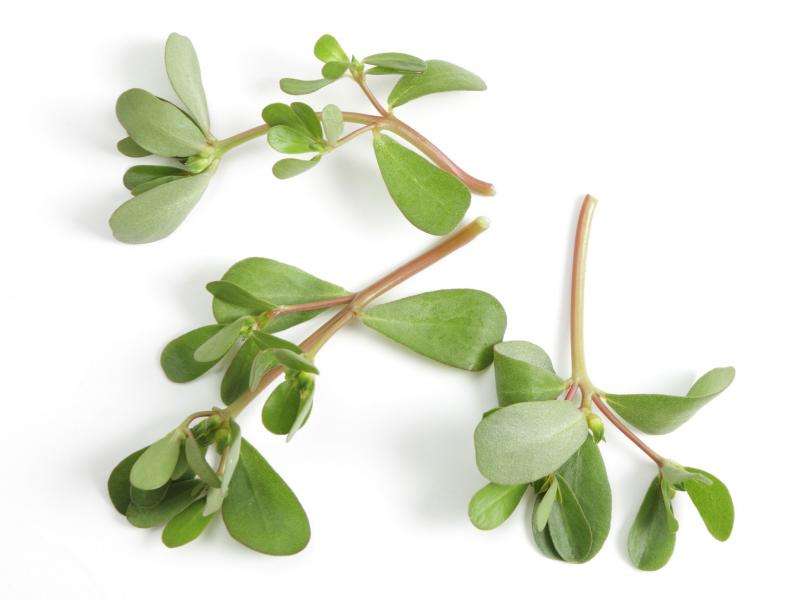Salt-tolerant herb rich in antioxidant compounds

Epidemiological studies have emphasised the importance of eating foods high in antioxidants to reduce the risk of developing cancer and cardiovascular disease, two leading causes of death worldwide. Inside the body, antioxidants neutralise free radicals, which can trigger cancer. These compounds are also known to have anti-viral and anti-inflammatory effects.
Purslane (Portulaca orelacea) is an herb grown in most regions of the world. It can adapt to various environmental stresses more easily than many other vegetables, which gives it a distinct competitive advantage.
One of the reasons for purslane's adaptability is its defence mechanism against saline soil. Salt stress increases levels of free radicals or reactive oxygen species (ROS), which can damage DNA and other metabolic products in plant cells. To detoxify ROS, purslane produces antioxidants such as phenolics, lavonoids and carotenoids.
Intrigued by the nature of this mechanism, Dr Amirul Alam and colleagues at Universiti Putra Malaysia (UPM) investigated the relationship between the concentration of antioxidants contained in purslane and the salinity levels of the soils in which it grew.
"Plant materials containing high phenolic and carotenoid compounds are increasingly of interest for the food industry as they participate in the defence against ROS. Thus salinity-stressed plants might represent potential sources of bio-active [antioxidant] compounds," says Dr Alam.
Dr Alam's team collected cuttings from 12 samples of purslane in West Peninsular Malaysia. All samples were grown in rice field topsoil for 30 days. Afterwards, the team applied pure water (control) or varying concentrations of salt water to each purslane sample. The biomass of the harvested purslane and its antioxidant levels were then measured.
The results showed that most purslane samples had higher levels of antioxidants than those observed in common garden vegetables such as asparagus, cabbages, carrots, celery, cucumbers, leaks, snap beans, Swiss chard and turnips. Consistent increases in antioxidant levels were also observed in four purslane samples following salinity treatments. These increases varied between 14% and 387%.
Despite this, the UPM study also found that above a certain salinity level (8.0 deciSiemens per metre), all of the purslane samples experienced significant decreases in biomass production. This finding suggests that salt concentrations should not exceed this threshold for the economic production of the herb.
Provided by Universiti Putra Malaysia

















